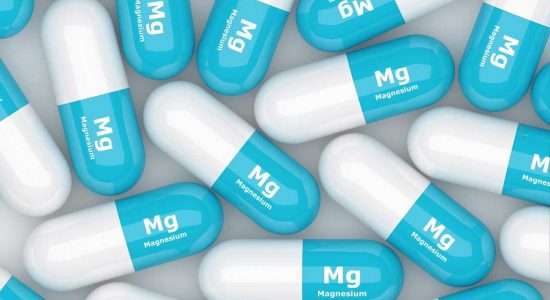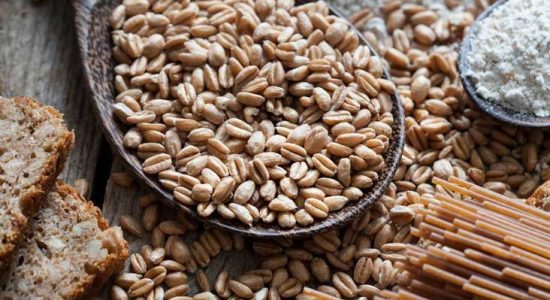A NEW LEASE OF LIFE FOR MIGRAINE SUFFERERS
WHAT IS MIGRAINE?
Controversy surrounds the diagnosis of migraine headache. Sufferers may experience a daily throbbing headache, intermittent migraine, or severe cluster headaches. Any type of persistent headache can be very debilitating and frustrating particularly when doctors don’t have all the answers.
According to the medical model, head pain can arise from constriction of blood vessels in the head or on the scalp, irritation of the brain lining or meninges as in meningitis, and muscles or ligaments of the upper neck or cervical spine. Migraine from vascular spasm is said to be associated with a heightened central nervous system (CNS) reactivity causing contraction of blood vessels that seems to affect the blood flow through the brain. More specifically, a hyper sensitised cervico-trigeminal nucleus in the brain stem.
An absolute diagnosis of migraine is still unclear in orthodox medicine. In nutrition medicine, headache or migraine has been associated with a number of nutritional deficiencies, and yet another poorly accepted trigger of headache or migraine but gaining evidence is the dysfunction of the upper 3 levels of the neck.

A recurrent neurovascular headache disorder characterized by attacks of debilitating pain associated with sensitivity to light, nausea, and vomiting. The highest incidence of migraine occurs in women between the ages of 20 and 35 and is often associated with a positive family history of the disease.
NUTRITIONAL TRIGGERS OF MIGRAINE


MAGNESIUM DEFICIENCY
Magnesium deficiency has been associated with tension headache, vascular migraine, and premenstrual migraine. Magnesium is needed for relaxation of the smooth muscles in blood vessels and to reduce nerve excitability. A deficiency of magnesium can cause increased muscle tension throughout the body, including spasm of the smooth muscle in the blood vessels of the brain, and tension of muscles in the neck.
Lifestyle factors affect your ability to maintain adequate tissue levels of magnesium. The modern diet with convenience foods is often low in essential minerals including magnesium. Even with a fantastic diet, stress, alcohol, cigarette smoke, and digestive disturbance will deplete your reserves of magnesium.
Exposure to heavy metals like mercury in amalgam fillings or cadmium in cigarette smoke and hair dyes deactivate magnesium within the cells. The blood test, red blood cell magnesium can be performed to verify a low tissue level of magnesium.
To treat migraine headaches with magnesium, supplement with between 300-800mg/day. Symptoms should ease within an hour or so of supplementation and prevent further onset if magnesium deficiency is the cause. Obviously further investigation to assess why the magnesium level is so low needs to be done to correct the problem at its source.
VITAMIN DEFICIENCY
Vitamin B2 supplementation may reduce migraine by improving cellular energy production in the mitochondria (energy factory), of your nerve and brain cells. Supplementing with 400mg/day reduces nerve excitability.
Vitamin B6 deficiency may be a causal factor in migraine triggered by matured cheese, chocolate, or red wine. These foods contain
high levels of substances called vasoactive amine compounds like histamine. Vitamin B6 is essential for the production of the enzyme in the small intestine that breaks down histamine.
Notably, alcohol, some medications, and the oral contraceptive pill reduces the absorption of vitamin B6 and may, in turn, increase the sensitivity to histamine containing foods. Eating foods high in vasoactive amine compounds such as cheese, chocolate or red wine may provoke
the response. For people who are sensitive to these foods and likely have a deficiency of this enzyme, supplementation of vitamin B6 at 1mg/kg of body weight is recommended.
Hormonal imbalance in women with excess oestrogen compared with progesterone leading up to menstruation impairs vitamin B6 and has a negative effect on neurotransmitter and endorphin levels. This may be a factor for premenstrual irritability. Deficiency of vitamin B6, one of the cofactors needed to make serotonin, reduces the tissue levels of serotonin in the brain to calm pain and predisposes to heightened CNS reactivity as oestrogen levels change premenstrually.
It has been speculated that food sensitivities trigger 20% of migraines. Foods that contain vasoactive amines, tyramine, and phenylalanine, found in foods such as aged cheese, red wine, beer, chocolate, and yogurt, are the most common triggers of migraine
Foods that commonly trigger migraine are cow’s milk, wheat, and gluten-containing foods, chocolate, egg, orange, shell-fish, citrus fruits and tomatoes, alcohol, coffee, and peanuts, but a large list of foods has been implicated.




FOOD ALLERGIES
Food allergy, and to a lesser degree food intolerance, has been connected to the onset of migraine headache. Resultant irritation of the gut wall may trigger migraine. Food allergy or intolerance
produces antibodies against your own body setting off an immune reaction in the gut mucosal lining. Reactive food particles stimulate inflammatory cells and they move into circulation.
Overgrowth of undesirable bacteria, fungus called Candida, or a parasite in the gut will compromise the gut lining with the same result. Inflammatory cells damage the lining of blood vessels and provoke spasm of muscles in the artery walls in the brain producing migraine.
COULD THE NECK BE THE ROOT OF ALL EVIL?

It is well known that dysfunction of muscles, ligaments or joints in the upper neck can refer pain into the head but it is becoming more evident that malalignment of the upper 3 cervical spinal levels can in fact cause increased reactivity of the cervico-trigeminal nucleus in the brain stem and provoke migraine including premenstrual migraine and cluster headache.
There is a direct connection via strong ligaments between the 2nd vertebrae and the skull. When the disc between the 2nd and 3rd vertebrae is disturbed, the 2nd vertebra can shift to the left or right subsequently deviating the skull as it sits on the spine producing headache directly or indirectly via irritation of the brainstem.
The good news is, realignment of these spinal segments by a suitably trained physiotherapist can eliminate headache and migraine in the majority of cases.
A word of caution, sudden onset of severe headache particularly over the age of 50 years may indicate a bleed and needs to be considered an emergency. Any persistent headache needs to be screened by a doctor to rule out other pathology.

